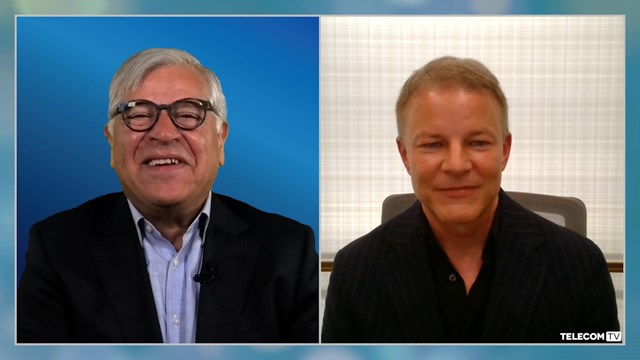
- BT gets longer to eject Huawei from its core platform
- Telco revenues set to climb but ARPU level set to fall, according to Omdia
- Netflix adds ads
In today’s industry news roundup: BT now has until the end of next year to rid its core network of Huawei technology; 5G isn’t going to help the telcos’ average revenue per user numbers, reckons research house Omdia; Netflix to launch ad-supported services in early November; and more!
The UK government has relented and given BT more time to remove Huawei technology from its core platform, the part of the network that controls the network, services and subscriber profiles – effectively the brain of the network. When the government first mandated in 2020 that the Chinese vendor’s gear should be removed from the UK’s mobile networks (and have only a limited role in fixed broadband access networks), a deadline of 28 January 2023 was set for ridding core platforms of all things Huawei, but that deadline has now been extended to 31 December next year and set in legal notices by the Department for Digital, Culture, Media and Sport. Late last June, BT stated that operational delays caused by the Covid-19 pandemic meant it wasn’t confident of hitting the January 2023 deadline and that “a short extension would be reasonable to reflect the significant, Covid-driven impacts to the programme over the past two years.” Now it has until the end of next year, which should be plenty of time for the now even more security-focused Networks team to switch to its Ericsson-supplied core platform.
Industry forecasts from analyst firms are often highly optimistic, so it makes a change (maybe not a welcome change for the industry) to highlight one that is important but somewhat pessimistic. According to the crystal-ball gazers at Omdia, the average revenue per user (ARPU) for consumer mobile and broadband services is going to fall by 4.2% between 2022 and 2027 even though overall global consumer service revenues are set to increase by 14% to $1.2tn. “In mobile markets, it is now evident that 5G will not be sufficient to offset ARPU decline as customers are unwilling to pay more for it,” notes the Omdia team. “Unlimited data and video streaming services bundled exclusively on 5G contracts have had some success, but this only gives the industry the illusion of a 5G ARPU uplift,” it adds in this announcement. This is not the kind of thing telcos and investors want to hear, but forewarned is forearmed, as my granny used to say.
In an effort to arrest its faltering subscriber growth and to provide more affordable services as people’s budgets get tighter, Netflix has announced plans to introduce a service called Basic with Adverts, which is cheaper than its current non-advertising-supported offering, starting on 3 November. It will be launched in Australia, Brazil, Canada, France, Germany, Italy, Japan, Korea, Mexico, Spain, the UK and the US, with an average 4 to 5 minutes of adverts shown for each hour of viewing. In the US, it will cost from $6.99 per month (compared with the entry-level price of $9.99 for the advert-free service) and in the UK it will start at £4.99 per month compared with £6.99 per month without adverts. Netflix reported a drop in global subscriber numbers in both the first and second quarters of this year, ending June with 220.67 million paying customers, but was confident it could reverse that trend in the third quarter, the details of which it will share on 18 October.
Man-of-the-people Mark Zuckerberg, the founder and CEO of the company formerly known as Facebook, has been evangelising remorselessly about his dream child Meta, even though his bizarre and clunky adolescent-looking avatar that has been doing most of the talking has been ruthlessly derided and lampooned. He claims, endlessly, that Meta, his “next-generation social platform”, will be a garden of unearthly delights, a virtual paradise for all of humanity to gambol about and ‘collaborate’ in. Actually, the early-bird access price to his stunted Nirvana was the $399.95 cost of the virtual-reality (VR) headset required to enter the portals of Shangri-la. Stung by criticism of the difference between the PR version of the metaverse pumped out by him and his company and the current feeble reality of legless torsos floating about in some watery medium that makes SpongeBob SquarePants’ home in Bikini Bottom look like photorealism, Zuckerberg has invested heavily in developing a new, improved VR headset, the Meta Quest Pro. And thus the cost of entry to Zuck’s Utopia has risen. The new headset is $1,499.99, more than three and a half times more expensive than the original model. The poor and huddled masses won’t be clamouring at the doors of Wonderland at that price. Seems this particular “other Eden” (Richard II, Shakespeare) is not a place for the lumpenproletariat after all but just a “little world” (also Richard II) for those that can afford big-ticket items. We all can, and I am sure, will, make our own interpretation of who the big ego is in Poussin’s “Et In Arcadia Ego”.
Staying with the metaverse, at Analysys Mason’s annual telecoms summit this week, the research house said that at least $2tn will need to be spent on the virtual universe by 2030 if it is to reach its potential, and most of that will be gobbled up by research into 6G (which will be utterly vital to and inextricable from making the metaverse work) and on cloud computing. Principal analyst Martin Scott pointed out that some of the vast expenditure will be wasted as companies find themselves trapped in technological cul-de-sacs as the route to 6G is mapped out. He further suggested that perhaps more industry attention might be devoted to making existing technology work better and improving the “tepid performance of 5G” by actually delivering its real benefits and stopping the hype and over-promising that has hurt user expectations and disappointed CSPs that had banked on bathing under a warm cascade of new revenue streams. Caroline Gabriel, a research director at Analysys Mason, commented: “Since the start of 5G we’ve argued the buildout can only be justified if operators expand into significant new markets and revenue streams. Most of the 5G vision has not really transpired.” She added, “If operators don’t start building the underlying pieces of 6G, it’s possible the next generation could be developed separately from the 5G ecosystem, and be primarily driven by cloud and internet communities”, but “there is still time for telcos to grab the bull by the horns and build systems that ensure the 6G business models become the natural successors to what they put in place today. This would leave them with a central role in the chain.”
The World Robotics Report 2022 from the International Federation of Robotics (IFR) reveals that an “all-time high” number of new industrial robots were installed globally in 2021, with 517,385 being put to work. That’s a year-on-year growth rate of 31% over 2020 and it is calculated that, as of now, there are 3.5 million industrial robots in operation around the world, with more being added to that total every day. Asia is the world’s biggest regional market, with 74% of all robots deployed in 2021 being installed there. As might be expected, China was the major market, growing by 51% in a year. Some 268,195 new units were shipped to or made within the PRC, meaning that one in every two industrial robots being placed anywhere on the planet were deployed in China. Japan came in second place with installations up by 22% in 2021: However, Japan easily remains the world’s leading nation in the manufacturing of robots. Elsewhere, South Korea was the fourth-largest robot market in terms of annual installations. In Europe, robot installations grew by 24% in 2021 to 84,302 units. Demand from the automotive industry was level, while the number of robots deployed in general industry grew by 51%. Germany, one of the world’s top-five robot markets, accounted for 28% of total installations in Europe last year, while Italy accounted for a 17% market share and France 7%. In the UK, in yet another shining example of the benefits of Brexit, the base of industrial robots fell by 7% to 2,054 units and the British automotive industry reduced robot installations by 42% to 507 units in 2021. That’s the way to “take back control”. Superb. Across the Atlantic, 50,712 industrial robots were installed in the Americas in 2021, 31% more than in 2020, marking a very rapid recovery from the pandemic. In the US, new installations were up by 14% to 34,987. That said, installations in the metal and machinery industry surged by 66% last year and that sector is now in second place in terms of robot demand in the US, while food and beverage industry deployments grew by 25%.
Orange, Bouygues Telecom, Capgemini and Atos are among the companies to have been awarded contracts by the French Ministry of the Interior and Overseas Territories to develop and build out the Réseau Radio du Futur (RRF – future radio network), a new secure network for domestic security and rescue services. The ministry says it will invest €700m in the new network.
- The staff, TelecomTV
Email Newsletters
Sign up to receive TelecomTV's top news and videos, plus exclusive subscriber-only content direct to your inbox.




